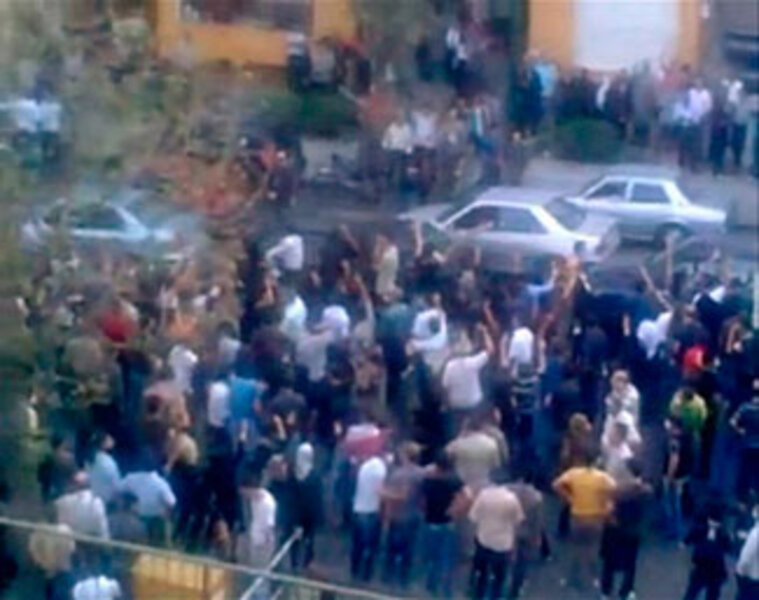Iran begins mourning cycle that could deepen unrest
Loading...
| Istanbul, Turkey
Thousands of people took to Tehran's streets Thursday after security forces disrupted a crowd gathered to commemorate fallen protesters. Some demonstrators were arrested and police used teargas to disperse crowds.
Despite some conciliatory moves by the regime on Wednesday, the faceoff between the Islamic Republic's pragmatic and hard-line factions shows no sign of abating.
Thursday's demonstrations erupted after a ceremony marking the end of an emotionally charged 40-day mourning period for demonstrators whom the opposition says were killed by security forces on June 20. Among them were Neda Agha Soltan, a young woman who has since become the symbolic face of the opposition movement.
Such ceremonies can potently blend ritual mourning with politics – and they helped bring down the Shah 30 years ago. In 1979, when antiregime activists gathered to commemorate the 40th day after the death of a comrade, protests often erupted around the event – leading to the killing of more demonstrators and another cycle of mourning and protest.
The current regime appears eager to head off such public mourning.
"There is a huge crowd out planning to march from Mosala [an enormous half-built mosque in central Tehran with Iran's highest minarets] to Vali Asr Square," says a protester on the streets of Tehran, who was reached by phone. "But all the roads to Vali Asr have been blocked by the special forces."
Arrests as crowd swells
Security forces arrested numerous participants at the earlier mourning ceremony, including two prominent filmmakers. Footage shot on cellphones at the sprawling Behesht-e Zahra cemetery – one of the world's largest – showed chanting crowds greeting the arrival of defeated presidential candidate Mir Hossein Mousavi.
Hands raised to the sky, they shouted slogans such as, "Ya Hossein, Mir Hossein."
In the Shiite Islamic tradition to which 90 percent of Iranians subscribe, "Ya Hossein" refers to the revered Shiite imam martyred in a 680 A.D. battle against an Islamic faction that later evolved into the Sunni sect. Mr. Mousavi was reportedly stopped by security forces from praying and forced back into his car.
"The authorities of the Islamic Republic blocked a mullah, Mehdi Karroubi [also a defeated presidential candidate], and a direct descendant of the prophet Muhammad, Mousavi, from entering a graveyard to read the Koran during a [Shiite] mourning ceremony," says a political analyst reached by phone who also requested anonymity.
Repressive measures persist, despite international attention
Protesters contacted by telephone – as well as images on BBC Persia, YouTube, and Twitter – painted a vivid picture of the scenes in Tehran. In a reprisal of the festival atmosphere that followed the days before and after the controversial June 12 election, columns of cars were backed up Thursday afternoon on central avenues, their drivers passively resisting with a cacophony of horns.
Members of the basiji militia loyal to President Mahmoud Ahmadinejad stood in jampacked intersections, waving metal batons at motorists. Smoke reportedly rose from northern Tehran's Vanak Square and riot police harassed, arrested, and finally fired teargas at demonstrators massing in Vali Asr Square.
Supreme Leader Ali Khamenei has steadily been losing credibility since appearing on TV the day after Mr. Ahmadinejad's controversial reelection to publicly back his protégé. This weekend, splits among Iran's conservatives emerged, with Ahmadinejad openly defying Ayatollah Khamenei over his choice of vice president before backing down.
"With all the international attention on this matter, I thought the wisest thing to do would be to give permission for people to gather in Mosala in memory of everyone who passed away," says the protester, speaking on the phone from Tehran. "For some reason, I thought they were going to change their approach today."





